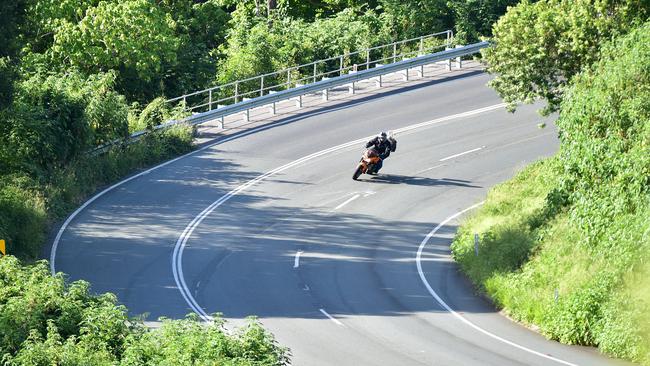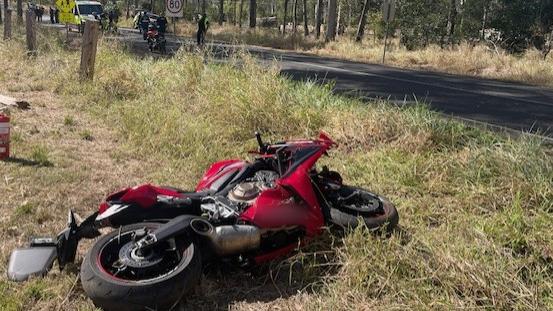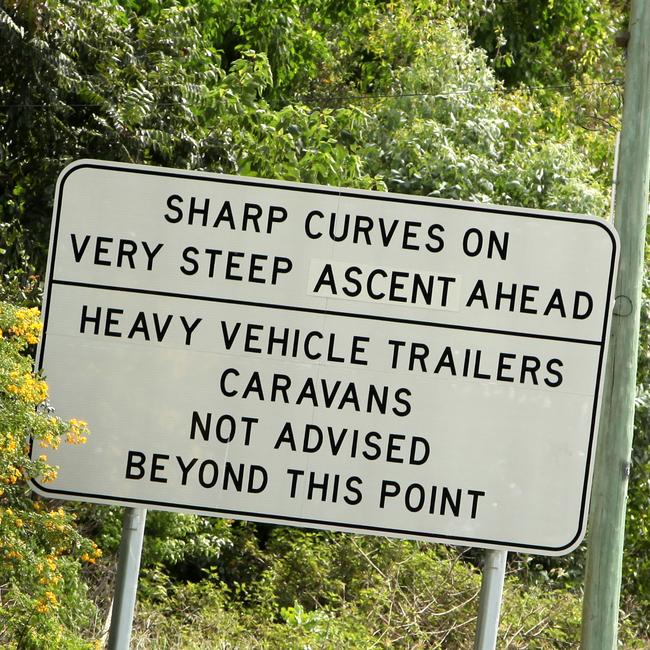Qld’s worst tourist drives for motorcyclist fatalities revealed
Queensland’s most popular tourist drives can sometimes prove deadly, as these numbers reveal.

QLD News
Don't miss out on the headlines from QLD News. Followed categories will be added to My News.
Weekend motorcycle riders are dying in horrifying numbers along some of the state’s most popular tourist drives.
Shocking new data has revealed that out of 21,500km of state-controlled roads Mount Glorious Tourist Drive was the most dangerous for riders — where more than 90 per cent of crashes involved motorcycles.
The confronting statistics from RACQ showed key hinterland routes for riders topped the list for fatal and serious injury crash rates.
Out of the 59 fatal and serious injury crashes on Mt Glorious Tourist Drive between 2019 and 2023, a confronting 92 per cent (54) involved a motorcycle.
The road between Dayboro and Mt Mee in Moreton Bay, as well as Beechmont Rd on the Gold Coast were also more perilous for motorcyclists.
Motorcycle rider and RACQ road safety and technical manager Joel Tucker said it was
time for all riders and drivers to take Mount Glorious and other hinterland roads more seriously.
About 80 per cent of fatal and serious injury motorcycle crashes involved a single vehicle, 74 per cent were on weekends, 94 per cent of those were on a curve and 96 per cent were in daylight when conditions were clear and dry.

“Too many motorcycle riders are pushing their limits on hinterland roads and paying severe consequences for it,” Mr Tucker said.
“Hinterland roads are not designed to be used like a racetrack – they’re for transport; and while they travel through some spectacular environments and can be a lot of fun to ride, they are often narrow, covered in slippery leaf litter, and lack safety design features.”
Mr Tucker said urged weekend leisure riders out with their mates to ride to conditions.
“Don’t get competitive, and don’t break the law because your life matters. Please drop the ego, not the bike.”
He said speed was a frequent factor in the large number of weekend crashes.
“The minute that you start to push the envelope a little bit you’re losing all of your margin for error and unfortunately that is ending in some very severe injuries and in some cases fatalities as well.”

Trauma surgeon and Royal Australasian College of Surgeons’ Queensland trauma committee chair Professor Martin Wullschleger said he had seen the spectrum when it came to injuries suffered by motorcycle riders.
“When you crash and come off a motorcycle, there is little protecting your body, especially if you are not wearing good safety gear,” Prof Wullschleger said.
“I’ve seen far too many injured motorcyclists, spanning from fatal and life changing brain injuries, to men with shattered pelvises and genitalia after their pelvises hit the fuel tanks on
initial impact.
“Others came off second best with shattered arms and legs, sometimes needing multiple reconstructive operations or even amputations.”
Prof Wullschleger said he has seen more limb amputations from people in motorcycles than car crashes.
“Over the last 10 years, 15 years, the stats, the bike crashes are a bit higher than before,” he said.
“It’s particularly confronting for our junior staff who haven’t seen it as often.”
MotoDNA academy CEO and rider coach Mark McVeigh said overconfidence was often a killer.
“Riders need to have a ‘learn for life’ mindset and embrace training which is not just about machine control skills and road-craft but also the mental approach. I am sure riders who have crashed did not think it would happen to them.
“Rider training, beyond what’s required to get your licence, is a fun and safe way for you and your mates to learn critical skills together in a controlled environment. The skills you learn could save your life.”
Originally published as Qld’s worst tourist drives for motorcyclist fatalities revealed



